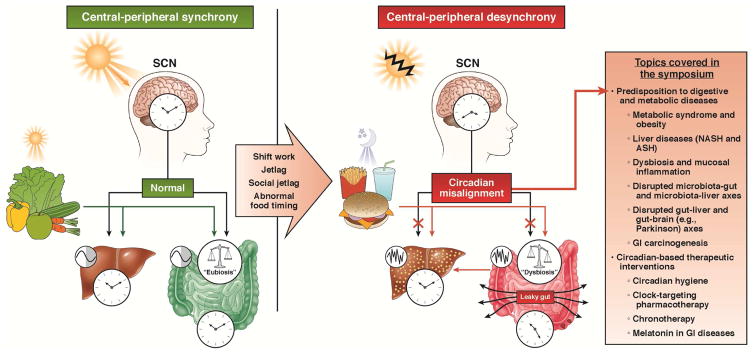Figure 1.
Under physiologic conditions, there is a synchrony between the central circadian clock in the suprachiasmatic nucleus (SCN) and the peripheral (hepato-intestinal) circadian clock (left panel). While SCN is entrained by light, the latter, in addition to SCN signals, could respond to food. Disrupted light exposures (e.g., shift work, jet lag) or dyssynchrony between food and light signals (e.g., abnormal eating pattern) could cause central-peripheral misalignment, predisposing to a variety of digestive and metabolic pathologies (right panel).

